
Dawn of the Dead is a 1978 zombie horror film written, directed, and edited by George A. Romero, and produced by Richard P. Rubinstein. An American-Italian international co-production, it is the second film in Romero's series of zombie films, and though it contains no characters or settings from the preceding film Night of the Living Dead (1968), it shows the larger-scale effects of a zombie apocalypse on society. In the film, a phenomenon of unidentified origin has caused the reanimation of the dead, who prey on human flesh. David Emge, Ken Foree, Scott Reiniger, and Gaylen Ross star as survivors of the outbreak who barricade themselves inside a suburban shopping mall amid mass hysteria.
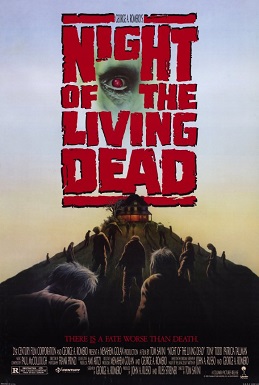
Night of the Living Dead is a 1990 American horror film directed by Tom Savini and starring Tony Todd and Patricia Tallman. It is a remake of George A. Romero's 1968 film of the same title; Romero rewrote the original 1968 screenplay he had originally co-authored with John A. Russo.

Thomas Vincent Savini is an American prosthetic makeup artist, actor, stunt performer and film director. He is known for his makeup and special effects work on many films directed by George A. Romero, including Martin, Dawn of the Dead, Day of the Dead, Creepshow, and Monkey Shines; he also created the special effects and makeup for many cult classics like Friday the 13th, Maniac, The Burning, The Prowler, and The Texas Chainsaw Massacre 2.

Maniac is a 1980 American psychological slasher film directed by William Lustig and written by C. A. Rosenberg. It stars Joe Spinell as Frank Zito, an Italian-American serial killer residing in New York City who murders and scalps young women. Spinell was also co-writer of the film.
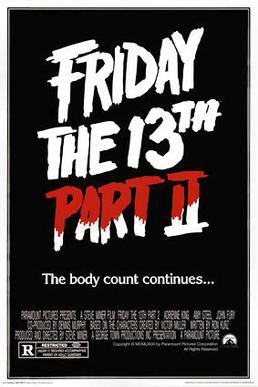
Friday the 13th Part 2 is a 1981 American slasher film produced and directed by Steve Miner in his directorial debut, and written by Ron Kurz. It is a direct sequel to Friday the 13th (1980), and the second installment in the franchise. Adrienne King, Betsy Palmer, and Walt Gorney reprise their respective roles from the first film as Alice Hardy, Pamela Voorhees, and Crazy Ralph. Amy Steel and John Furey also star. Taking place five years after the first film, Part 2 follows a similar premise, with an unknown stalker killing a group of camp counselors at a training camp near Crystal Lake. The film marks the debut of Jason Voorhees as the series' main antagonist.

Basket Case is a 1982 American horror film written and directed by Frank Henenlotter in his feature directorial debut. Produced by Edgar Ievins, the film stars Kevin Van Hentenryck as Duane Bradley, a young man who seeks vengeance on the doctors and nurses who performed an unwanted surgery that separated him from his deformed conjoined twin brother Belial, whom Duane hides in a large wicker basket.

Ruggero Deodato was an Italian film director, screenwriter, and actor.
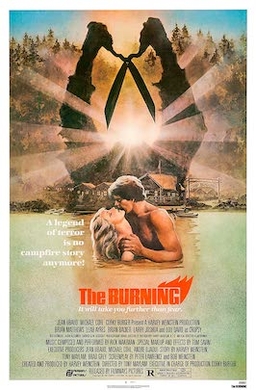
The Burning is a 1981 American slasher film directed by Tony Maylam, and starring Brian Matthews, Leah Ayres, Brian Backer, Larry Joshua, and Lou David. Its plot follows a summer camp caretaker who is horribly burnt from a prank gone wrong, where he seeks vengeance at a nearby summer camp years later. The film marks the debuts of actors Jason Alexander, Fisher Stevens, and Holly Hunter.

Incubus is a 1982 Canadian supernatural slasher film directed by John Hough and written by George Franklin, based on the 1976 novel of the same name by Ray Russell. It stars John Cassavetes, Kerrie Keane, and John Ireland. The plot focuses on a small Wisconsin town where a mysterious figure is raping and murdering young women. Its title is sometimes extended to The Incubus.

Butcher, Baker, Nightmare Maker is a 1981 American exploitation horror film directed by William Asher, and starring Susan Tyrrell, Jimmy McNichol, Julia Duffy, and Bo Svenson. Framed as a contemporary Oedipus tale, the plot focuses on a teenager who, raised by his neurotic aunt, finds himself at the center of a murder investigation after she stabs a man to death in their house. The boy's sexually repressed aunt secretly harbors incestuous feelings for him, while a detective investigating the crime irrationally believes the murder to be a result of a homosexual love triangle.

The Prowler is a 1981 American slasher film directed by Joseph Zito, written by Neal Barbera and Glenn Leopold, and starring Vicky Dawson, Christopher Goutman, Lawrence Tierney, Cindy Weintraub, and Farley Granger. The film follows a group of college students in a coastal California town who are stalked and murdered during a graduation party by an apparent World War II veteran who killed his ex-girlfriend in 1945.

Necromancy is a 1972 American supernatural horror film directed by Bert I. Gordon and starring Orson Welles, Pamela Franklin, Michael Ontkean, and Lee Purcell. The plot follows an enigmatic cult leader in a small California town who attempts to harness the powers of a local woman to resurrect his dead son.

Absurd is a 1981 Italian slasher film directed, lensed and co-produced by Joe D'Amato and starring George Eastman, who also wrote the story and screenplay.

The Slayer is a 1982 American independent supernatural horror film directed by J. S. Cardone. Set on a small island near the Atlantic coast, the plot concerns two couples who upon visiting the island get trapped there due to an oncoming hurricane. As one of the women knows from her plaguing nightmares that the island is dangerous, over the next three days they begin to be killed by something unseen. The film is notable for gaining notoriety and being classified in the United Kingdom as a "video nasty" in the 1980s.
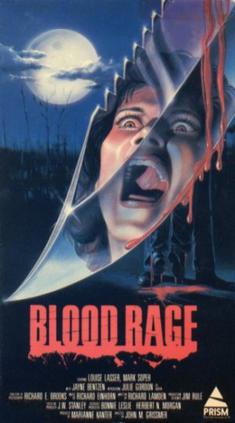
Blood Rage is a 1987 American slasher film directed by John Grissmer, written by Bruce Rubin, and starring Louise Lasser, Mark Soper, and Julie Gordon. Set on Thanksgiving, the film follows a woman and her adult son who are stalked at their remote apartment community by the son's unhinged twin brother who has escaped from a psychiatric institution after allegedly murdering a man years earlier.
Romano Scavolini is an Italian film director and the younger brother of screenwriter Sauro Scavolini.
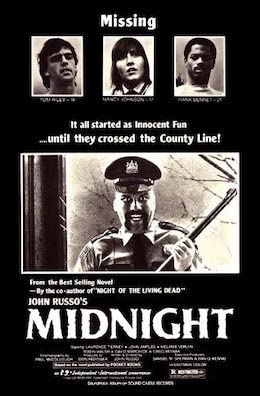
Midnight is a 1982 American exploitation horror film directed by John Russo and starring Melanie Verlin, Lawrence Tierney, and John Amplas. Its plot follows a female hitchhiker en route to San Francisco who finds herself at the mercy of a backwoods Satanic cult in Pennsylvania who sacrifice young women in an attempt to resurrect their dead mother. It is based on Russo's 1980 novel of the same name.
Cleve A. Hall was an American special effects artist, make-up artist, and actor who starred on the Syfy reality television series Monster Man.

Effects is an American horror film. The film premiered on November 9, 1979, but did not receive a wide release until October 2005, when it received an official DVD release by Synapse Films. It features make-up effects by horror FX legend Tom Savini, who also appears in the film.
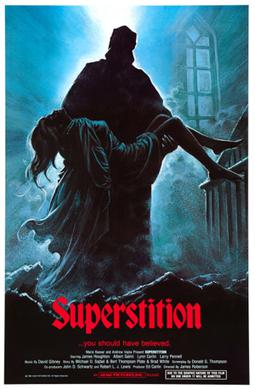
Superstition is a 1982 American supernatural slasher film directed by James W. Roberson and starring James Houghton, Albert Salmi, and Lynn Carlin. The plot follows a family who move into a house that was once the site of a witch's execution. Though shot in 1981, Superstition was not released in US before 1985.



















